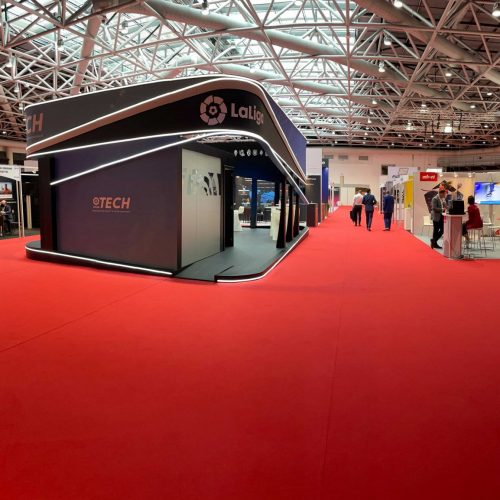How do you make your brand more global? Nike show the answer is making it more local
How do you build global brand? That’s easy. Be more local.
Having a global appeal doesn’t mean having one appeal that speaks to everyone. The world is simply too diverse to allow any organisation to please all the people all the time – at least it is if you only have one message.
It turns out that the solution to engaging with more people around the world is actually engaging with more people around the world. But the key is actual engagement. Everything from conversing directly with fans and customers on Twitter to hiring dedicated teams to create content in the area of the world where that content will be consumed by your audience.
This goes for brands as well as sports clubs. The trends show that the best output is that which shows some thought.
Nike, for example, is one of the most recognisable brands in the world, but their approach to social media and global marketing doesn’t boil down to one strategy applied globally.
Nike.com is offered in 48 different different localities, leading the reader to 48 different versions of the website, each tailored to the specific needs of every country. Select Belgium, for example, and you’ll be given the choice of whether to see content in Dutch, Flemish, German or English – that doesn’t just hit on a language-based need, it’s also a cultural sensitivity.
Nike may be an American brand, but it takes more than just lip service to different regions to attain the level of global appeal that Nike enjoys online, it requires making the effort to establish yourself in every region. The existence of ‘Nike Football’ as well as ‘Nike Soccer’ is yet another example. Two different accounts for two different audiences – and in a ‘language’ they both speak.
It’s Nike’s attention to detail in this regard that helps them to have such a dedicated global following. @nikefootball don’t post very often – unlike, for example @adidasfootball, who post several times per day – but they do spend time every day conversing with their customers directly through Twitter.
@Axel_Wolf1418 Awesome, great to hear. What position are you playing, Joe?
— Nike Football (@nikefootball) July 11, 2016
Instead, much of the social media marketing is done by their sponsored athletes, but the sportswear giant takes the time to match the athlete to the campaign.
Every day brings kickoff closer. Can’t wait to get back on the pitch. #JustDoIt #TeamNike pic.twitter.com/eoxkNjF30G
— Neymar Jr (@neymarjr) July 6, 2016
It’s not just the Nike who understand that global appeal requires localisation. Type FC Barcelona into the Twitter search bar, for example, and you’re likely to find a huge list of verified Twitter accounts all run by the club in different languages.
But some of the more interesting takes on this approach come from German football clubs in Japan – bizarre, I know, but bear with it. Japanese footballers like Shinji Kagawa, and Atsuto Uchida are plying their trade in the Bundesliga at Borussia Dortmund and Schalke 04, and both clubs are capitalising on the fame their players enjoy in their homeland.
Yet they aren’t doing this simply by translating their online content into Japanese. They are trying to connect properly with their Japanese audience by employing Japanese content creators to create more tailored content.
Indeed, fellow German club FSV Mainz 05 have taken a similar approach – they themselves were building a Japanese fan base on the back of the popularity of their Japanese striker Shinji Okazaki. When Okazaki left Mainz to join Premier League champions Leicester City, the Germans signed Yoshinori Muto from FC Tokyo.
It’s easy to be cynical about such a signing, but Muto is hardly a footballing flop, becoming only the second Japanese player to score a Bundesliga hat trick last season as Mainz finished sixth and qualified for Europe. But it has given them another figure to base their Japanese content around, even if the aim is to grow awareness about the club and not simply be a source for news about their one Japanese player.
The success of this approach is best seen in the fact that two most retweeted tweets in Bundesliga history are both from Borussia Dortmund and both about their Japanese hero. One when he rejoined the club from Manchester United and one when he scored his first goal after coming back.
帰ってきた!#wiederhier #backhome pic.twitter.com/GkyXRxoHfo
— Borussia Dortmund (@BVB) August 31, 2014
KAGAWAAAAAAAAAAAAAAAAAAAAAAAAAAAAAAAAAAAAAAAAAAAAAAAAAAAAAAAAAAAAAAAAAAAAAAAAAAAAAAAAAAAAAAAAAAAAAAAAAAAAAAAAAAAAAAAAAAAAAAAAAAAA bvbscf 2-0
— Borussia Dortmund (@BVB) September 13, 2014
We’ve also seen this more personalised approach recently at sporting events, too. The Copa America organisers managed to reach huge audiences through social media by localising their content, too.
Their team included social media managers working in different languages, as well as people who followed each team around the tournament, graphic designers and statisticians to help create the content.
¡Chi Chi Chi Le Le Le! ¡Viva Chile! @LaRoja ???????????? #CAMPEONES #Copa100 pic.twitter.com/zPl8RKYvmR
— Copa América 2016_sp (@CA2016_sp) June 27, 2016
Congrats to our #Copa100 Champions, @LaRoja. Thanks for all the hard work! pic.twitter.com/osK7JhGHqa
— Copa América 2016 (@CA2016) June 27, 2016
All of this shows the benefit of putting a little bit of thought into who your audience is. The success of these clubs, brands and events on social media is borne out of the fact that their strategies take into account the fact that there is no one size fits all approach to social media. And that goes for social media channels, too.
During the Copa America, producing content in different languages – English, Spanish and Portuguese, mostly – was clearly important, but so too was understanding how people interact with your content across different platforms. Christianne Harder, the head of digital at the Copa America told Jake Cohen of The Set Pieces that Spanish content did better on Facebook, whilst English-language content was the most engaged with on Twitter.
“It was incredibly important for us to have a robust social and digital offering, as we wanted every fan, not knowing what their access would be to the games, to be able to enjoy the matches in real time.”
Though it’s clear that there is always going to be a certain amount of trial and error when first starting out with this sort of approach, understanding how different people in different regions consume content on social media will be key to a positive reaction.
And in order to do that, clubs and brands have to understand the territory they’re wading into. Hiring content creators who are from that area, people with a knowledge of the customs and culture of that area and who are also sensitive to things things like public holidays – something that seems trivial, but is quite important if you’re posting on social media.
Attention to detail goes a long way, and the brands such as Nike are a lesson to sports teams and other brands who are trying to broaden their global appeal. To do that, you have to be prepared to spend time and money getting acquainted with every locality. If you want to go global, you have to go as local as you possibly can.
About author
You might also like
SPORTEL 2021: Day One Recap
This year’s prestigious SPORTEL convention kicked off in sunny Monaco today, welcoming a host of familiar faces as well as plenty of new ones. Doors opened at 8:30am with businesses
Six Founding Riders Set To Bring The Vision Of The UCI Track Champions League To Life
Olympic Champions, UCI World Champions and World Record holders join the new track cycling competition debuting in November 2021 The UCI Track Champions League is delighted to announce that six
Sports related spending to soar this summer as pre-pandemic life resumes
New insights from eBay Ads UK reveal the potential for brands to engage with an excited but nervous nation as sports events get back on track As pubs and indoor








